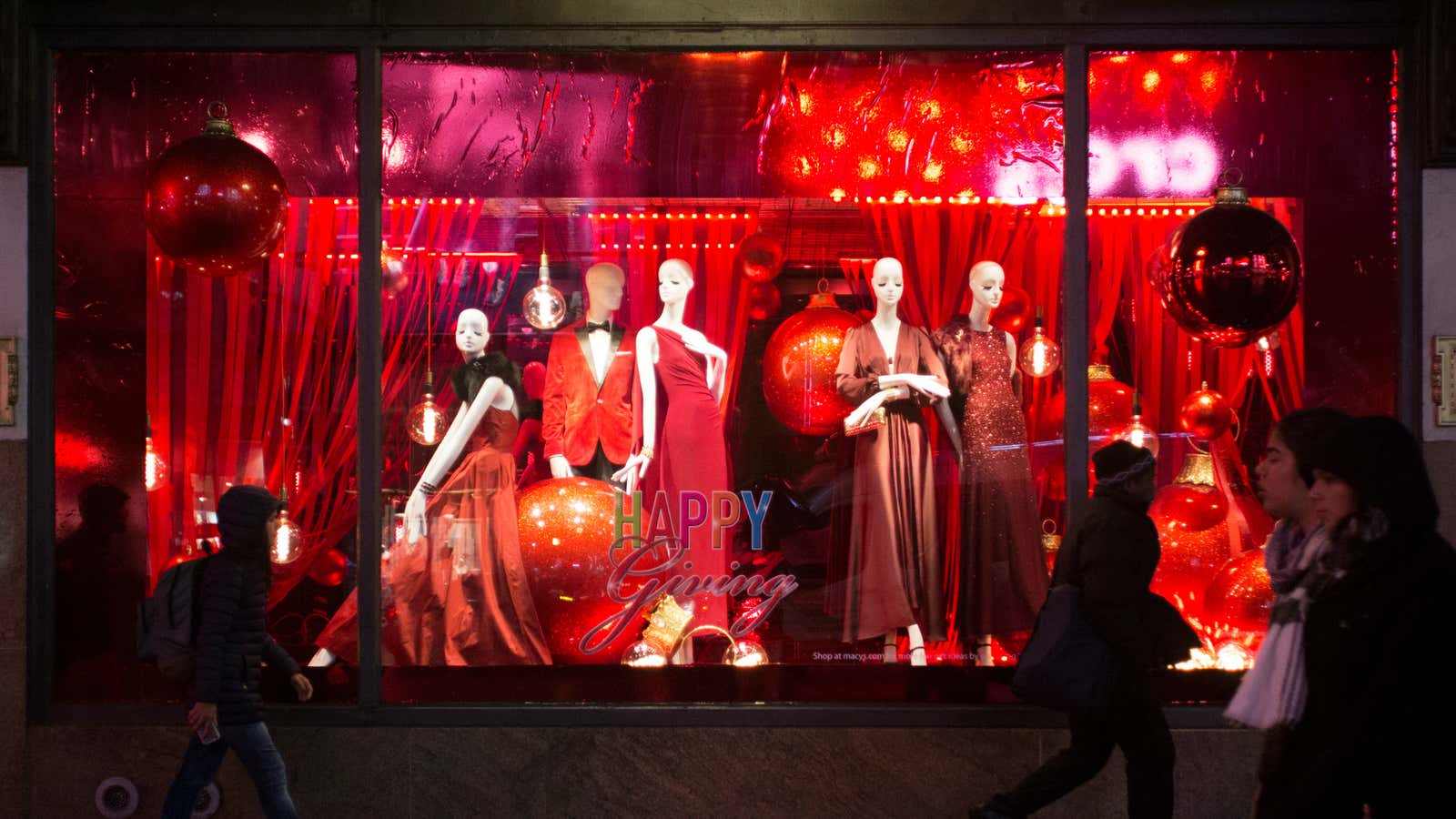It’s that time of year again, when the windows of your local high street clothing stores, as well as your social media feed, are a winter wonderland of trashy holiday party gear.
Sequins, feathers, and shimmery satin are juxtaposed with rich wools dyed bright colors. Conservative-cut work dresses are shot through with streaks of gold or silver. Tuxedo jackets and crushed velvet are everywhere. Snuggly fur coats are incongruously sleeveless. And sequins, did I mention the sequins?
Taken as a whole—especially through the twinkle-lit glass of a festive store window—it’s totally pizazz-y and festive as hell.
But look a little closer, and this stuff is kind of appalling. Not only is it impractical (scratchy metallic-thread mini-dresses and stilettos in the middle of December, what?) it is—like most fast fashion—poor quality clothing designed to only wear once or twice (and priced to convince you that’s fine).
Fast fashion retailers with brick-and-mortar windows to fill—think TopShop, H&M, Zara, and their ilk—are giants in this arena, and their big, glitzy holiday campaigns are the apotheosis of fast fashion’s deeper problems. With office parties, holiday dinners, and new year’s eve to plan for, they’re counting on customers to load up on poor-quality, cheap clothing to be worn and torn in a single season.
Indeed, this idea underpins the entire fast fashion industry, and while consumers may be content to cram more and more stuff into their closets, then give away trash bags full when they get the urge to declutter, that mountain of cheap clothing is not doing the world any good: It’s piling up in landfills, polluting waterways, and even undercutting textile producers in developing nations.
Because it’s not made to last, secondhand stores reject a ton of the fast fashion they receive, so people end up tossing it in the trash. According to the Environmental Protection Agency this practice put 84% of unwanted clothes in the US into a landfill or incinerator in 2012. What’s more, fast fashion products are often made out of plastics and cheap synthetics (all those sequins!) that can take hundreds or thousands of years to biodegrade. And the manufacturing industry itself is a major source of the greenhouse gases.
Even companies that run clothing recycling programs, like H&M, have noted that a meager 0.1% of clothes collected in donation initiatives are converted into new textile fiber. The long-ranging issues with the industry have come to a head in the UK, where MPs have accused fast fashion players like Boohoo, ASOS, and Primark of propagating a “throwaway culture,” and recently called on them to justify their low pricing practices.
So, before you’re tempted by that $20 fur vest to wear over a dress covered in mirrors this new year’s eve, it’s worth keeping in mind that the fast fashion machine is almost as ugly as a tinsel-threaded sweater. Instead, consider investing in something of higher quality, repairing or restyling something you already own, buying something second-hand, or looking into a clothing rental service.
Don’t ring in 2019 feeling chilly and looking like Christmas tree ornament.
